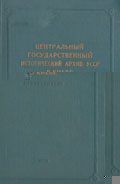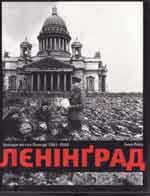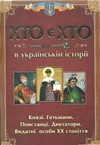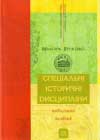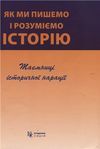The Enlightenment world
- Деталі
- Категорія: Книги
- Опубліковано: Субота, 20 вересня 2014, 00:55
- Перегляди: 236

The Enlightenment world / Edited by Martin Fitzpatrick, Peter Jones, Christa Knellwolf and Iain McCalman. - (Adobe eReader Format).
INTRODUCTION
Peter Jones
No single idea, belief or practice unites all of the writers associated with Enlightenment thought; no one meaning informed even the banners under which dispute was sustained; no one definition embraces the ways in which the most self-consciously used terms were employed – terms such as �science’, �republic’, �scepticism’, �Christian’, �atheist’. This does not render such labels useless, because they function as maps, simultaneously reflecting and requiring interpretation. No one map, and no single label, can represent everything that could be represented; each must be drawn up on a certain scale, and all can be misread. An analogy with maps was popular among writers of the time who were keen to signal the challenges of interpreting unfamiliar contexts. Richard Bentley (1662–1742), the first Boyle lecturer, in 1692 was worried by the fact that we can only view the topography of the past as if from a mountain top: the very real obstacles confronting travellers on the ground are flattened out: �All the Inequality of Surface would be lost to his View; the wide Ocean would appear to him like an even and uniform Plane (uniform as to its Level, though not as to Light and Shade) though every Rock of the Sea was as high as the Pico of Teneriff’ (Boyle’s Lecture Sermons 1739: vol.1, 84). Moreover, as Anthony Collins (1676–1729) forcefully stated in 1710, maps �are not designed to represent Mountains, Valleys, Lakes and Rivers, to those who have no Ideas of them. Maps suppose Men to have these Ideas before-hand’ (Collins 1710: 36).
Many writers were aware of the importance of contexts in determining both what to do and how to understand the past. The discipline, familiar to all educated people in the seventeenth and eighteenth centuries, which placed context at the centre was rhetoric, underpinned by grammar. Bishop Berkeley (1685–1753), in 1709, captures the thought, by then almost commonplace, illustrating a point made by Dybikowski (Chapter 3), that remarks deemed unexceptionable from a bishop’s pen are perceived as subversive from a freethinker’s: �A word pronounced with certain circumstances, or in a certain context with other words, hath not always the same import and signification that it hath when pronounced in some other circumstances, or different context of words’ (Berkeley 1732: para. lxxiii).
Rhetoric was supposed to be concerned with effective public communication, but practical success explicitly presupposed many things, above all transparency inmeaning: this did not assume that anything was self-evident, but rather that everything required interpretation. Ephraim Chambers (1680–1740), in 1728, echoed an idea trumpeted by almost everyone since Francis Bacon (1561–1626): that wilful obscurity should be condemned because it gives a reader the spurious freedom to invent whatever meaning he wishes, and with it the seductive illusion of ownership. The human mind, he says, �in apprehending what was hid under a veil, fancies itself in some measure the author of it’ (Chambers 1728: �Mixed Fables’). He recognized, of course, that the more a study of rhetoric was confined within institutions, the more it declined into scholastic formalities.
There is something arbitrary and artificial in all writings: they are a kind of draughts, or pictures, where the aspect, attitude, and light, which the objects are taken in, though merely arbitrary, yet sway and direct the whole representation. Books are, as it were, plans or prospects of ideas artfully arranged and exhibited, not to the eye, but to the imagination; and there is a kind of analogous perspective, which obtains in them, wherein we have something not much unlike points of sight, and of distance. An author, in effect, has some particular view or design in drawing our his ideas . . . The case amounts to the same as the viewing of objects in a mirror; where, unless the form of the mirror be known, viz. whether it be plain, concave, convex, cylindric, or conic, etc., we can make no judgement of the magnitude, figure, etc. of the objects.
(Chambers 1728: vol. I, xvi)
Clarity of expression was everyone’s declared goal, but the frequency with which it was asserted indicated the extent of the struggle. Too often writers failed to define their central terms, or to abide by their definitions. And, as D’Alembert acidly observed in 1751, when it came to acknowledgements, �the common practice is to refer to sources or to make citations in a way that is vague, often unreliable, and nearly always confused’ (Diderot and D’Alembert 1751: xxxvii). Moreover, two theoretical problems seemed to make the tasks of communication intractable: first, the puzzling relations of language to the world; and second, the ubiquitous implications of change. D’Alembert, no doubt reflecting on Chambers, declared that:
It is almost as if one were trying to express (a ) proposition by means of a language whose nature was being imperceptibly altered, so that the proposition was successively expressed in different ways representing the different states through which the language had passed. Each of these states would be recognized in the one immediately neighbouring it; but in a more remote state we would no longer make it out.
(Diderot and D’Alembert 1751: viii–ix)
He fears, in other words, that across separated points in time, and in the absence of an intervening medium, we may be unable to work out what was being said. The meaning of many everyday expressions might change independently of any changes in what they described. Action-at-a-distance might be doubtful; meaning-at-adistance impossible.
To grasp the import of such insights, let us consider briefly some of the differences between, say, 1759 and today. In that year Handel died, and the Seven Years War (1756–63) was raging to no one’s benefit. In that year, too, Voltaire (1694–1778) published Candide, Samuel Johnson (1696–1772) his moral tale Rasselas, and Adam Smith (1723–90), Theory of Moral Sentiments. With the eighth volume about to be published, the great Encyclopйdie of Diderot (1713–84) and D’Alembert (1717–83) was banned by order of King Louis XV, along with De l’Esprit of Helvйtius (1715–71). In chapter 30 of Johnson’s melancholy novel, Rasselas and his sister declare themselves to have little interest in history. They are firmly rebuked: �To see men we must see their works, that we may learn what reason has dictated, or passion has incited, and find what are the most powerful motives of action. To judge rightly of the present we must oppose it to the past; for all judgement is comparative, and of the future nothing can be known.
Such a view had been gathering support for over a century, and in 1759 had been conspicuously exemplified in the newly published Tudor volumes of David Hume’s History of England. Hume (1711–76) had already identified one unavoidable challenge: historians of the past know the outcome and consequences of actions, but not the intentions necessary for understanding them. The original agents, on the other hand, know their own intentions when they set out, but not the outcome. But there are other kinds of challenge: for example, almost no statistics were available. In 1752 Hume stated, �We know not exactly the numbers of any European kingdom, or even city, at present’ (Hume 1752: vol. 1, 414). Yet, in 1759 no one can be said, in a defensible modern sense, to have known:
• anything about forms of energy other than light and heat;
• anything about the composition of air or water;
• anything about the nature of fire, breathing or procreation;
• anything about the age of the earth or the size of the universe;
• anything about the nature of stars or the origins of life;
• anything about the evolution of animals or genetic inheritance.
There were, of course, �opinions’ about such matters, and within a dozen years or so some recognizably modern views were being formulated; but we have beliefs about these things, with varying degrees of assurance, and such beliefs irradiate all our assumptions and attitudes. To enter the minds of 1759, as it were, we would have to un-think what we know, in order to understand what we do not believe. Can it be done?
Alongside conceptual challenges of this kind, a second point about context and method should be underlined. There are huge differences over time in what is admitted, by whom, to be a proper question; and in what count as the proper methods for reaching acceptable answers to it. Hume was not the first to insist that scientific and religious views may be understood by ordinary people, and may affect their lives in ways quite other than philosophers acknowledge – this was a fairly standard observation by Deists. The elements of abstract theories that might be translated into common life were always unpredictable, even if detectable. Moreover, an increasing number of writers from the mid-seventeenth century onwards, including Claude Perrault (1613–88) and Fontenelle (1657–1757) in France, and Hume and Adam Ferguson (1723–1816) in Britain, argued that most people were simply not motivated by theories of any kind, and most definitely not purely by reason. Following Bacon, they all held that fact, not doctrine or untestable speculation, was the goal of enquiry. Echoing French contemporaries such as Bayle and Fontenelle, and citing their classical mentor Cicero, the unidentified author of The Spectator, 408, in 1712 (often thought to have been Alexander Pope) prominently declared, �Reason must be employed in adjusting the Passions, but they must ever remain the Principles of Action’ (Spectator, 408).
Contemporaries can be as puzzled by terminology as later historians. There was, of course, censorship, and writers might need to disguise what they meant; but readers could also suspect subversive texts where none was intended. In the first two parts we read how writers variously understood such terms as �Newtonianism’, or �scepticism’, and how they employed what today we regard as �sceptical’ arguments in surprisingly selective contexts. Garrett (Chapter 4) emphasizes that many writers influenced by, or even adopting, sceptical arguments did not see themselves as sceptics, nor as addressing sceptical challenges. Indeed, like other labels, including �republican’ and �Christian’, the ideas encompassed under them vary almost to the point of self-contradiction. Overall, however, the goal of many prominent writers accused, or even boasting, of a sceptical approach to knowledge was to promote rigorous, repeatable, experience-based enquiry. That such a goal strikes a modern reader as hardly worthy of comment demonstrates the total success of the approach – and the difficulty of understanding contexts in which such views were vigorously challenged.
In Chapter 2 Schouls explains how, for thinkers of the early modern period, tradition was rejected as a principal source of truth and wisdom: both the criteria and objects of certainty lay within individuals themselves. And although neither Descartes nor Locke discarded God from his philosophy, they had established the means by which their immediate followers could, and would, do so. Indeed, in 1753 Turgotf (1727–81) surmised that Descartes dared not admit the irrelevance of God to his philosophical position because of the solitude it entailed. The demand and search for certainty may seem incomprehensible to a modern reader, but society itself appeared to be under threat as the authority of those who had claimed knowledge collapsed: was everyone equally ignorant? What were the criteria of justified belief; what warranted the acceptance of other people’s claims; how should prejudice be identified and replaced? Prejudice was an important notion because, as Milton (1608–74) stated in his Areopagitica, if a man �beleeve things only because his Pastor says so . . . without knowing other reason, though his belief be true, yet the very truth he holds, becomes his heresie’ (Milton 1644: 38–9).
Such anxieties meant that the nature of education had to be addressed, with emphasis on individual effort and achievement, and rejection of the mechanical repetition of traditional methods and ideas. Insistence on thinking and judging for oneself soon led to the view that one’s knowledge is essentially made – not passively imbibed, not inherited, not divinely vouchsafed. In his Novum Organum (I.xcv) of 1620, Bacon had famously claimed:
Those who have handled sciences have been either men of experiment or men of dogmas. The men of experiment are like the ant; they only collect and use; the reasoners resemble spiders, who make cobwebs out of their own substance. But the bee takes a middle course; it gathers its material from the flowers of the garden and the field, but transforms and digests it by a power of its own. Not unlike is the true business of philosophy.
Thereafter, most thinkers up to Condorcet (1743–94) said something about education. Benjamin Franklin in 1749 tells his readers to study Milton, Locke, Hutcheson, Obadiah Walker, Charles Rollin and George Turnbull. The earlier writers, such as Milton and Descartes, initially dismissed tradition, culture and community as irrelevant, but even they soon reabsorbed all three notions into their emerging moral, social and political philosophies. Locke, followed by Hume and his Scottish contemporaries, insisted that knowledge and its pursuit could not be merely individual endeavours: for one thing, no one has enough personal experience to ensure even minimal security in a hostile world. Indeed, knowledge must be regarded as an essentially social phenomenon, requiring the presence of others from whom to learn, and among whom to test one’s own ideas. Moreover, Hume, arguably inspired as much by Descartes’s successors such as Malebranche (1638–1715) as by Locke, insisted that we cannot understand the nature of the present without some notion of its roots in the past. This required a grasp of the culture and tradition from which the present emerged, and awareness of the often complex causal connections that occurred. Only with such awareness can anyone in the present decide what needs revision or rejection in the repertoire of ideas and practices they have inherited; and only with such awareness can anyone hope to build on past successes and avoid past errors. Obvious: once it has become obvious.
By the mid-seventeenth century there had developed a recognition that even if scholastic philosophical and theological obscurities could be successfully shamed into dissolution, the increasingly specialized new enquiries – later labelled as �scientific’ – were generating new obstacles to mutual understanding. Ephraim Chambers, writing only a year after the death of Isaac Newton (1642–1727), deplored the fact that in the modern world people �of the same profession, no longer understand one another . . . [and] our knowledge is grown into little other than that of peoples misunderstandings or misapprehensions of one another’ (Chambers 1728: xvii).
An indication of the extent to which the new, moderately sceptical, experiencebased enquiries had permeated most areas of study by the time of the French Revolution in 1789 can be gauged from two brief quotations. In the first, William Robertson, leader of the Moderate clergy in Edinburgh, and Principal of the university there, objects to the ways in which missionary priests had projected their own views on to the peoples whom they wished to convert:
They study to reconcile the institutions, which fall under their observations, to their own creed, not to explain them according to the rude notions of the people themselves. They ascribe to them ideas which they are incapable of forming, and suppose them to be acquainted with principles and facts, which it is impossible that they should know.
(Robertson 1777: vol. 2, 133)
Adopting a similar tone, and writing at the beginning of the Revolution, J.-M.-A. Servan (1741–1808), a distinguished French lawyer, observed that in conjectures about the future one cannot guess the intervening crevasses that might impede progress towards distant mountains – a metaphor that by now had lasted more than a century:
No matter how much we study we shall never learn more than a little of the present, far less of the past, and almost nothing, perhaps even nothing at all, of the future . . . History, in short, provides warning signals; it is a light that alerts us to the dangers of a reef ahead, but it is not a clear chart and compass.
(Servan quoted by Bongie 1965: 76)
Although Enlightenment ideas did influence subsequent thought in so many ways, it is easy to forget one of their central social insights. It is this. Everyone learns and absorbs ideas from other people, from the contexts in which they live and from the traditions with which they become familiar. Very rarely have even the bestknown thinkers originated the ideas for which they are famous; typically, what distinguishes them are the ways in which they mould, develop or emphasize existing ideas, make new syntheses and interpret their own context. Countless philosophers before David Hume, for example, reflected on the how and why of change, and thus on the nature of causation, including his immediate predecessors discussed in this book, such as Malebranche, Locke, Descartes and Bacon – quite apart from Aristotle, whose famous distinction in Poetics, II.8, between causal connection and mere temporal sequence, was known to everyone. A rather small group of Hume’s contemporaries agreed with his analysis of causation, but it is subsequent interpreters and historians who have singled out his work as peculiarly influential on later thought. Contemporaries and posterity judge authors by different standards and from different perspectives.
Most of the discussions in this book refer to activities and ideas of an exceptionally small minority of the total populations: they were the people who held or aspired to power, and who possessed or had access to resources which enabled them to pursue or promote enquiry and implement change. The social benefits of their influence were most marked in the educational opportunities that gradually became available to more people, accompanied by decreasing poverty, and the eventual participation of more people in decisions which affected their own lives. It would be a mistake to think, however, that the names or achievements of those whom we discuss were known to more than a handful of their contemporaries or their descendants.
REFERENCES
Bacon, F. (1620) Novum Organum, in The Philosophical Works of Francis Bacon, ed. John M. Robertson, trans. Ellis and Spedding (1905) London: Routledge.
Berkeley, G. (1732) An Essay towards a New Theory of Vision [1709], 4th edn, in (1975) Philosophical Works, introduction by M. R. Ayers, London: Dent.
Bongie, L. L. (1965) David Hume Prophet of the Counter-revolution, Oxford: Clarendon Press. [Boyle’s Lecture Sermons] (1739) A Defence of Natural and Revealed Religion: Being a Collection of the Sermons Preached at the Lecture Founded by the Honourable Robert Boyle, Esq. (From the Year 1691 to the Year 1732), London.
Chambers, Ephraim (1728) Cyclopaedia: or an Universal Dictionary of the Arts and Sciences, 2nd edn, 2 vols (1738) London.
[Collins, Anthony] (1710) A Vindication of the Divine Attributes . . . , London.
Diderot, D. and D’Alembert, J. (1751) �Discours Preliminaire des Editeurs’, in Encyclopйdie ou Dictionnaire Raisonnй Des Sciences, Des Arts et Des Mйtiers, Paris.
Hume, D. (1752) �Of the Populousness of Ancient Nations’, in Political Discourses, Edinburgh; quoted in Essays and Treatises on Several Subjects (1764) London.
[Johnson, S.] (1759) The History of Rasselas, Prince of Abissinia: A Tale, London.
Milton, J. (1644) Areopagitica, ed. John W. Hales (1894) Oxford: Clarendon Press.
Robertson, William (1777) The History of America, Dublin.
Коментарі

